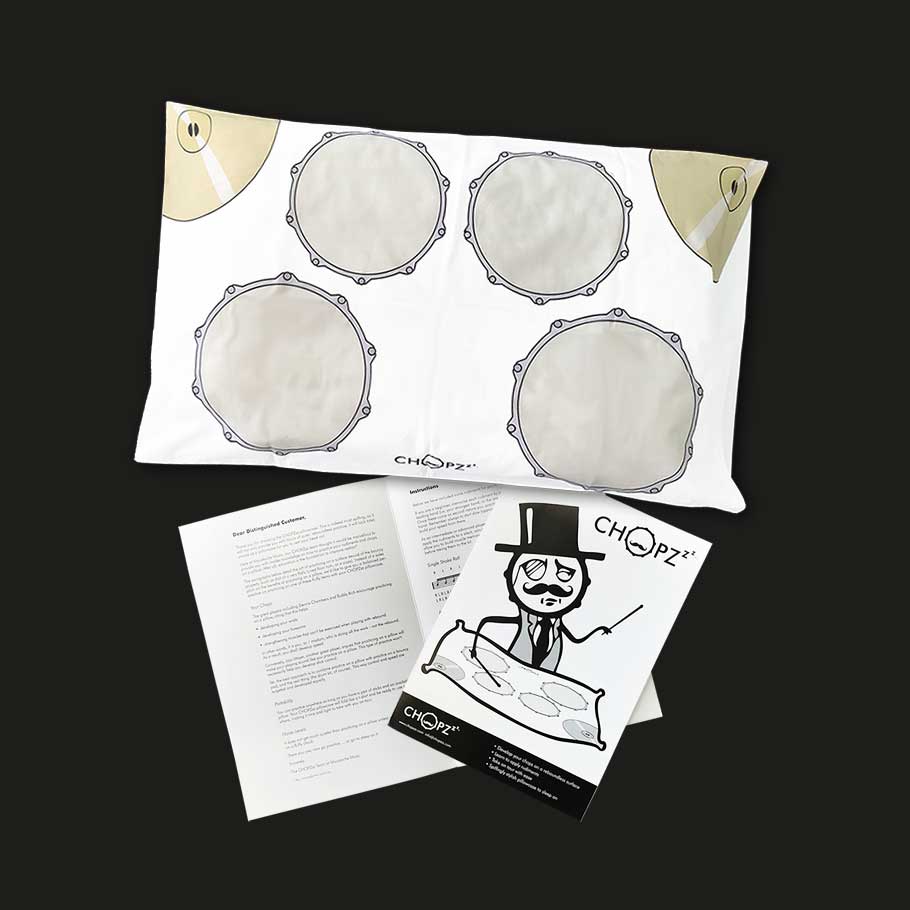
10 Ideas To Boost Your Creativity On The Drum Kit
Creativity on the drum kit
Michelangelo supposedly once said that “every block of stone has a statue inside it and it is the task of the sculptor to discover it”. Same goes for creating a groove or fill on the drum kit; all the notes and rhythms are there, we just need to uncover them!
Let’s explore creativity on the drum kit as a problem-solving exercise; ask ourselves questions about the music to help us figure the best grooves, fills, etc. You can also dive deep and explore creativity on the drum kit with my drum book “Concepts”, by the way! It’s got tons of great ideas for you to try on the drums.

“Every block of stone has a statue inside it and it is the task of the sculptor to discover it…”
Definitions
OK, so let’s first definite a couple of things:
Creativity
This is the “ability to produce something new through imaginative skill” (Merriam Webster dictionary).
Problem solving
Let’s think of this as strategic, cyclical “steps that one would use to find the problem(s) that are in the way to getting to one’s own goal” (Bransford & Stein, 1993).
In order to succeed at this stuff though, we have to actively listen to the music we’re trying to come up with the right parts! But remember, there are no right or wrong answers as it’s all subjective. Some people will like your work, some won’t… And that’s OK!
Let’s dive in.
#1. Tempo
How fast or slow we play affects the whole feel and impact of a song, so finding that “pocket” is crucial. But does the same tempo apply to the whole song? It could be fun to explore different sections slightly faster or slower. This could enhance the overall musical and emotional impact, even if by a few BPM!
In a way, playing to a click can take away from that natural human feel… As such, it’s worth point out that time perception is affected by lots of factors including stress, excitement, etc. So think that a tempo agreed at a rehearsal may seem right one day but wrong on another purely going by how your day’s been, and how you’re feeling!
Consequently, a tendency to flow with the music according to how it makes you feel, or how it is intended to make people is a great skill too. Being malleable and fluid to feeling is something that can get overlooked in a click and drum programming culture.
As this can have a direct impact on our perception of the song, it can affect what we choose to play.
#2. Dynamics
For dynamics on the drum kit, we generally think about ghost notes, accents, crescendos and diminuendos to create tension and effect. It’s useful to be aware of our default settings in order to stimulate creativity and help overcome stumbling blocks!
In this case, for example, during a quiet section should you play the same drum part as its energetic counterpart, but quietly? Or would playing something slightly different work better? Again, there’s no right or wrong answers; nothing here is absolute! This great instrument that is the drum kit is a vehicle for our personality and we should let that shine through!
By the way, if you’re enjoying the article so far and want to learn more, why not check out my drum lessons?

Should our grooves during quiet sections be the same as on loud sections but quieter?
#3. Reduction
This means either transforming the problem into a simpler one, or into one with an existing solution. In other words, we could simplify the problem down to its foundations, or look at what others have done and come up with your own version of it.
To simplify the problem, in this context, try to reduce the song at its simplest elements; the root notes and basic rhythm. You’ll be able to then lock into the foundations of the song and embellish, if necessary, from there.
On the other hand, when looking at other drummers for inspiration, an idea would be refer to a similar song and pay attention to what they’ve done in order to build their ‘solution’. This is a fantastic way to help you become a better musician; the more music you listen to, the more deeper your reference base, the more adept at nailing a specific feel you will be.
#4. Language
In November 2017, I attended a Jojo Mayer & Nerve masterclass where Jojo had some excellent points! I thought I’d contextualise them into creative problem solving for the drum kit.
During the Q&A session the band discussed their approach to improvisation. Jojo spoke of developing musical knowledge as learning a language in order to be fully conversational with it. Bassist John Davis elaborated on this by suggesting music as a language transcends theory.
The idea here is that when crafting our parts for a song, deep knowledge of the genre we’re writing for is helpful! Yet, where do we begin? There are so many resources to draw knowledge from: albums / playlists, YouTube videos, teachers, books, courses… You name it!
#5. Vocals / Lyrics
The human voice, and percussion are the oldest instruments, and so the link between rhythm and language is deep. Understanding this can be used to great effect creating our parts for the drum kit.
Personally, I find that working closely with the vocals, which are ultimately the focal point of a song, can be just as important as working with the bass. We gotta ask ourself how can we best help support and carry the message? Paying attention to the vocals’ lines, accents, and space is immensely importance. To that effect, working with the singer / lyricist to create hooks based around simple rhythms can be a great way to develop congruent parts that fit these hooks.

The human voice and percussion are the oldest musical instruments.
#6. Context
Where we’re coming from and where we’re going to plays a big part in deciding what to do next! From what sounds we play on the drum kit to how we play them. For instance, obvious as it may sound, slowly opening hi hats adds tension, the ride provides a feeling of freedom, where as tom-toms could be used for tribal or melodic effect.
Working as a session musician, one of the key lessons I’ve learned is that songwriters have a really interesting approach to percussion and the drum kit. This can lead to interesting rhythmic ideas, which might feel odd and outside our comfort zone (which is a good thing). The trick is to clearly interpret their wishes, but to do so in a way that complements every element of the composition.
#7. Genre specificity
Understanding of what kind of music we’re playing can go a long way to help us figure out what we could / should play. In order to give certain music authenticity, we should play rhythms which are specific to the genre. Being aware of the genre we’re writing for can also help us in stepping outside of it to find inspiration in different genres too. This can bring new ideas and flavours to a song.
#8. Rudiments
Much like melodic scales, rudiments help us find our way around rhythms and the drum kit. They help us identify rhythms, melodies and accents which facilitate us orchestrating them accordingly to compliment a passage of music.
Use rudiments to explore accents and melodies. Try orchestrating the single and double strokes, and ‘melodies’ by focusing on the rhythms each hand produce, whether on the snare, around the tom-toms, cymbals or a mix. You can create great grooves by playing a rudiment between the snare and hats and playing the bass drums on, for instance, beats 1 and 3.
In fact, if you’re interested in further developing your creativity on the drum kit from a technical perspective, check out my book Concepts. It’s full of great ideas to explore your creativity around the kit!
#9. The Bass
A melodic and rhythmic instrument. It’s well-known that us drummers should work closely with bassists. By paying attention to what the is bass doing we can not only avoid rhythmic clashes but, if we’re stuck, can match their rhythm or create complimenting grooves. Either way, the tighter this relationship is, the better the band will sound.

King of BASS, Davie504.
#10. K.I.S.S.
Keep It Simple, Stupid! This can be overlooked as we try to come up with cool and complex, yet sometimes unnecessary parts. Think of the song as a method of communication, on that’s been around for thousands of years. Consequently, the clearer the message, the more effective it is.
As such, perhaps thinking about our drum parts as an instrument of clear communication can help inspire, or think differently about what we could / should play. AC/DC are a perfect example of keeping it simple, with drum parts to match. The caveat here, however, is musical context and your choices will be influenced the genre, style, brief, etc. you’re working on.
Conclusion
Here I’ve tried to stress that the more clearly we define the problem, the clearer our solution is. We’ve have considered different elements that may help us, as Michelangelo suggested, carve out a suitable groove. So, keep in mind that this is a process, and that the solution might not be clear straight away!
You can even put this problem-solving mentality to work when you’re not behind the kit too! Listen to your favourite records and check out what the drummer does. Think about about how you would change what they have done slightly, and then try and come up with something of your own. Picture yourself playing it; tapping it on your lap might, as a bare minimum, provide you with the sticking pattern you would use.
Thanks again for reading! I hope you found this article interesting and useful.









